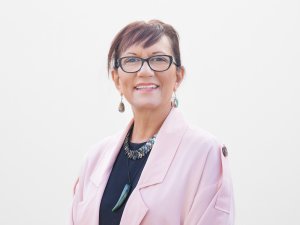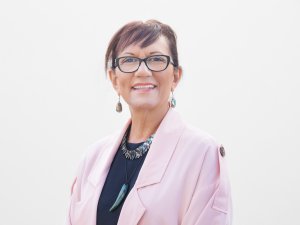Respiratory physician Lutz Beckert considers chronic obstructive pulmonary disease management, including the prevention of COPD, the importance of smoking cessation and pulmonary rehabilitation, and the lifesaving potential of addressing treatable traits. He also discusses the logic of inhaler therapy, moving from single therapy to dual and triple therapy when indicated, as well as other aspects of management
Māori innovation reflects need not enterprise
Māori innovation reflects need not enterprise

We are on our summer break and the editorial office is closed until 17 January. In the meantime, please enjoy our Summer Hiatus series, an eclectic mix from our news and clinical archives and articles from The Conversation throughout the year. This article was first published in the 15 December Summer edition
Iwi and Māori health services have taken the bull by the horns to focus on protecting their whānau in the pandemic. They feel they have more than proven themselves and deserve to be involved in decisions and funded accordingly, writes Alan Perrott
- Māori healthcare innovations have been a necessary response in the pandemic, providers say, and they want to continue and develop these.
- Funding has been problematic but hopes rest on the arrival next year of the Māori Health Authority.
- Uneven funding distribution has led some providers to share resources and staffing in clusters.
Our business is probably going to be 40 per cent mobile services, 50 per cent or so virtual, and a small fraction, static
Innovations brought in by iwi and Māori health providers are actually a necessary response to massive need amid the COVID-19 pandemic, says Turuki Healthcare chief executive Te Puea Winiata.
“This is our reality,” Ms Winiata says. She questions where the vaccination rollout would be without the Māori and Pacific providers.
Ms Winiata (Ngāti Ranginui, Ngāi te Rangi, Ngāi Tamarāwaho, Tūhoe, Tainui) was one of the first advocates for mobile vaccination services.
Turuki eventually took vaccinators to several south Auckland marae, but first had to battle funding inflexibility and being questioned over patient safety.
The wider health system acknowledges the success of such innovations, but the problem, she says, is that the funders don’t seem able to keep up.
“So, how do we hold on to what has been achieved and remain nimble? There is no such thing as wartime and peacetime in health now, they are blurred together.”
Ms Winiata hopes the Māori Health Authority, which starts next July, will include providers in funding decisions.
Funders must rapidly react to changing healthcare priorities on the ground, such as the shift from static to mobile vaccination sites, she says.
“If the evidence shows we need to change our approach, the funding must follow.” It has taken too long to “convince people to support our judgement and reading of the situation”.
Timing of funding has also been slow. Short-term contracts have got under way with no funding in the first few months: “[But] until then we have to carry the financial burden.”
Ms Winiata is working on another mobile model that will offer easy-access healthcare to attract patients who can then be queried on their vaccination status. Such clinics could be based for several weeks in a neighbourhood known to have low vaccination rates.
“Everything is changing,” she says. “Our business is probably going to be 40 per cent mobile services, 50 per cent or so virtual, and a small fraction, static. What that will look like as a general practice that has been reliant on working from a static site is going to be interesting.”
In Bay of Plenty, Te Puna Ora o Mataatua chief executive and authority interim board member Chris Tooley says Te Puna Ora submitted a proposal for mobile vaccinations a year ago, but funding criteria did not allow for it.
With vaccination rates in eastern Bay of Plenty flagging and Delta spreading, the provider suspended almost all its healthcare contracts in September and committed to vaccinations. Its mobile vaccination scheme has funding from Te Puni Kōkiri.
Systemic issues meant the programme lost momentum and they ended up scrambling to catch up, Dr Tooley says.
Ms Winiata says funding and resources need to be stretched right across south Auckland. Recently, some providers have been able to quickly get volume and funding, “like they are the chosen ones”, while others appear not to have been trusted.
As a result, she says some providers are now working in clusters to share resources and staffing.
Turuki Healthcare worked alongside Māngere Health Centre Doctors on a vaccination project. Turuki ran the big main event, and provided staff for a smaller clinic for the disabled community at the Māngere practice.
This space was quiet with deaf interpreters on hand, and those attending were encouraged to take their time and ask any questions they might have before deciding on a vaccination.
Ms Winiata hopes this relationship will be ongoing; it will likely sit outside normal funding structures.
Via email, general manager of Te Puke-based Poutiri Wellness Centre Kirsty Maxwell-Crawford says Māori providers have proven “over and over” they have ability to work with the communities to create quick, innovative and efficient health responses.
However, their efforts to embed equity within the system requires strong Māori leadership at every level.
Ms Maxwell-Crawford says evidence is clear, that when there is an absence of Māori leadership and Māori funding models, New Zealand perpetuates a primary care system that contributes to poorer health outcomes.
“Unlike a larger provider such as a DHB, where layers of approvals are required, hauora providers can, and do, pivot effectively, especially during times of natural disasters and pandemics.
“This is often because we deliver in communities that we are a part of, and the decision-makers with delegation are often at the front line with their team, when required.
“A flat and nimble structure allows for timely, informed decision-making to serve and meet the rapidly changing needs in the community.”
We're publishing this article as a FREE READ so it is FREE to read and EASY to share more widely. Please support us and our journalism – subscribe here







![Barbara Fountain, editor of New Zealand Doctor Rata Aotearoa, and Paul Hutchison, GP and senior medical clinician at Tāmaki Health [Image: Simon Maude]](/sites/default/files/styles/thumbnail_cropped_100/public/2025-03/Barbara%20Fountain%2C%20editor%20of%20New%20Zealand%20Doctor%20Rata%20Aotearoa%2C%20and%20Paul%20Hutchison%2C%20GP%20and%20senior%20medical%20clinician%20at%20T%C4%81maki%20Health%20CR%20Simon%20Maude.jpg?itok=-HbQ1EYA)
![Lori Peters, NP and advanced health improvement practitioner at Mahitahi Hauora, and Jasper Nacilla, NP at The Terrace Medical Centre in Wellington [Image: Simon Maude]](/sites/default/files/styles/thumbnail_cropped_100/public/2025-03/2.%20Lori%20Peters%2C%20NP%20and%20advanced%20HIP%20at%20Mahitahi%20Hauora%2C%20and%20Jasper%20Nacilla%2C%20NP%20at%20The%20Terrace%20Medical%20Centre%20in%20Wellington%20CR%20Simon%20Maude.jpg?itok=sUfbsSF1)
![Ministry of Social Development health and disability coordinator Liz Williams, regional health advisors Mary Mojel and Larah Takarangi, and health and disability coordinators Rebecca Staunton and Myint Than Htut [Image: Simon Maude]](/sites/default/files/styles/thumbnail_cropped_100/public/2025-03/3.%20Ministry%20of%20Social%20Development%27s%20Liz%20Williams%2C%20Mary%20Mojel%2C%20Larah%20Takarangi%2C%20Rebecca%20Staunton%20and%20Myint%20Than%20Htut%20CR%20Simon%20Maude.jpg?itok=9ceOujzC)
![Locum GP Helen Fisher, with Te Kuiti Medical Centre NP Bridget Woodney [Image: Simon Maude]](/sites/default/files/styles/thumbnail_cropped_100/public/2025-03/4.%20Locum%20GP%20Helen%20Fisher%2C%20with%20Te%20Kuiti%20Medical%20Centre%20NP%20Bridget%20Woodney%20CR%20Simon%20Maude.jpg?itok=TJeODetm)
![Ruby Faulkner, GPEP2, with David Small, GPEP3 from The Doctors Greenmeadows in Napier [Image: Simon Maude]](/sites/default/files/styles/thumbnail_cropped_100/public/2025-03/5.%20Ruby%20Faulkner%2C%20GPEP2%2C%20with%20David%20Small%2C%20GPEP3%20from%20The%20Doctors%20Greenmeadows%20in%20Napier%20CR%20Simon%20Maude.jpg?itok=B0u4wsIs)
![Rochelle Langton and Libby Thomas, marketing advisors at the Medical Protection Society [Image: Simon Maude]](/sites/default/files/styles/thumbnail_cropped_100/public/2025-03/6.%20Rochelle%20Langton%20and%20Libby%20Thomas%2C%20marketing%20advisors%20at%20the%20Medical%20Protection%20Society%20CR%20Simon%20Maude.jpg?itok=r52_Cf74)
![Specialist GP Lucy Gibberd, medical advisor at MPS, and Zara Bolam, urgent-care specialist at The Nest Health Centre in Inglewood [Image: Simon Maude]](/sites/default/files/styles/thumbnail_cropped_100/public/2025-03/7.%20Specialist%20GP%20Lucy%20Gibberd%2C%20medical%20advisor%20at%20MPS%2C%20and%20Zara%20Bolam%2C%20urgent-care%20specialist%20at%20The%20Nest%20Health%20Centre%20in%20Inglewood%20CR%20Simon%20Maude.jpg?itok=z8eVoBU3)
![Olivia Blackmore and Trudee Sharp, NPs at Gore Health Centre, and Gaylene Hastie, NP at Queenstown Medical Centre [Image: Simon Maude]](/sites/default/files/styles/thumbnail_cropped_100/public/2025-03/8.%20Olivia%20Blackmore%20and%20Trudee%20Sharp%2C%20NPs%20at%20Gore%20Health%20Centre%2C%20and%20Gaylene%20Hastie%2C%20NP%20at%20Queenstown%20Medical%20Centre%20CR%20Simon%20Maude.jpg?itok=Z6u9d0XH)
![Mary Toloa, specialist GP at Porirua and Union Community Health Service in Wellington, Mara Coler, clinical pharmacist at Tū Ora Compass Health, and Bhavna Mistry, specialist GP at Porirua and Union Community Health Service [Image: Simon Maude]](/sites/default/files/styles/thumbnail_cropped_100/public/2025-03/9.%20Mary%20Toloa%2C%20Porirua%20and%20Union%20Community%20Health%20Service%20in%20Wellington%2C%20Mara%20Coler%2C%20T%C5%AB%20Ora%20Compass%20Health%2C%20and%20Bhavna%20Mistry%2C%20PUCHS%20CR%20Simon%20Maude.jpg?itok=kpChr0cc)